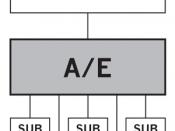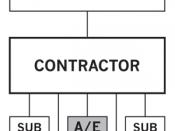IntroductionThe construction industry is not, as commonly considered, a stereotyped industry with only traditional and conventional technologies. Firms in the construction industry have adopted new management practices, cost strategies, changes in design and new technologies related to materials, equipment and components.(Gann, 2002, 226-31) Although innovation in construction takes place incrementally, over the long term technological and organizational changes amount to dramatic transformations. Since the 1950s, these transformations include changes in materials, industrialization (standardization and prefabrication), use of IT in design and in construction (automation and robotics) and changes in supply chain management.
Early reports to government have focused on the complexity of the construction process and the problems for contractors, in particular, to manage and harness innovation. More recent reports have identified potential drivers of change (especially the client). Among these reports, the Latham Report laid the foundations of the contemporary construction policy environment by calling for the industry to look to manufacturing processes for a model for the construction process.
(Lavender, 1996, 78-84) The Egan Report prescribes a number of practices to be adopted by the construction industry (consensus, teamwork, customer focus and supply chain integration) and promotes their adoption in construction projects. Despite these developments in the policy front, theoretical and policy treatment of the processes and management of innovation in construction have neglected the complexity of the social practices in construction and the new conflicts between the parties that may arise from the introduction of organizational and technological change.
Based on extensive interviews with contractors, consultants, suppliers and developers, this paper shows that these developments in project management and technologies have not eliminated the adversarial relations associated with the traditional contracting system but have created the potential for new conflicts in the construction sector that might affect innovation adversely. Since then, the different parties in the construction...


